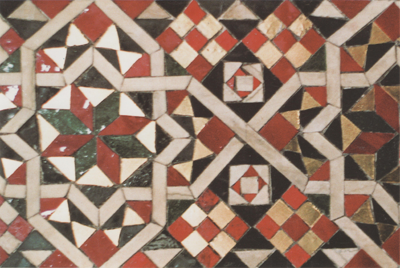 |
Harvey Sollberger, Flutist |
 |
Harvey Sollberger realized one day at the age of fifteen that the flute would be central to his life, and didn't look back (who knows what might have been gaining on him?) . But he found his true vocation as a stimulus, sponsor and interpreter of new flute music only later while at the University of Iowa in the late 1950s. By that time it was apparent that the flute was being reborn - re-imagined, even - in the minds of some of the most interesting and provocative composers of the day. The spiritual or symbolic godfather of these developments was certainly Edgard Varese with his Density 21.5 for solo flute. But the real throwing down of the gauntlet was the composition (and performance by its dedicatee, Severino Gazzelloni) of Luciano Berio's Sequenza I for solo flute in 1958. In one fell swoop, Berio declared the pastoral, frilly, cute, stereotypically “feminine” flute to be superceded by a new and much more interesting one: a flute that could rage and wheedle and be insolent, that could paw the ground and be sexy and secretive and much more. For Harvey Sollberger the cat was out of the bag, and a large part of his life's work, it was clear, would lie in the exploration and development of these exciting new possibilities in all of their ramifications. Berio's Sequenza - Sollberger was the second American to play it, after John Peras - burst the floodgates, and a steady stream of challenging new flute music came to the fore in the 1960s and after, much of it written for and dedicated to him. As he declared in a 1976 New York Times article, the static physical instrument was one thing (the flute had barely changed in its construction for more than 130 years); the flute as an evolving mental construct - “the instrument in your mind” - was another, and it is with this latter and its emerging possibilities that he was – and remains - concerned. As if to bolster these words, he had released a two-disc Nonesuch album in 1975 which contained eleven new flute solo and chamber pieces by ten composers and which contained, in the form of program notes, his extended essay on what he was then calling “The New Flute”. In Roger Reynolds's words, the album “posed and annotated an argument for the value of his instrument and the music it has elicited” and “was a watershed event, establishing the flute as a signature voice for music in the second half of the Twentieth-Century.” Complementing this, Sollberger was busy proselytizing, as well, through other recordings, touring performances, his Flute Farm (1975-1983), his contemporary flute literature classes and instruction at the Manhattan School of Music, private teaching and various articles targeted to new playing techniques and specific pieces. Among the composers who composed works for him over the years have been Milton Babbitt, Paolo Cavallone, Charles Dodge, Chou Wen-chung, Jeffrey Kresky, Peter Lieberson, Otto Luening, John Melby, Robert Moevs, Nicolas Roussakis, Sandra Sprecher, Peter Westergaard, Richard Wilson, Stefan Wolpe and Charles Wuorinen. From 1993 to 2004, Sollberger cut back on his playing activities as conducting came to take a more central place amid his activities. He resumed the thread of playing in 2004 on the occasion of participating in a New York Flute Club concert honoring his sixty-fifth birthday. Subsequently, he has given the name Project 75 to an undertaking he expects to pursue during the rest of his years as a flutist. Throughout his life he has studied, performed, lived with and come to inhabit as deeply and profoundly as he could, a select group of solo flute works that speak most deeply to him. Project 75 seeks to winnow this select group still further. In this, he draws inspiration from the views of two of his senior colleagues, Aurele Nicolet and Klaus Huber (who like him, whether by coincidence or not, are Swiss). In a recent article Nicolet is reported to regret that extended study of and prolonged involvement with single pieces of music is on the decline, that “this kind of deep work is disappearing in our fast and busy world today”. And Klaus Huber, in the introductory notes to his Ein Hauch von Unzeit , calls the piece “several madrigals for solo flute – a complaint over the loss of musical reflection.” Project 75 is about musical reflection as manifested in deep immersion in the world and mystery of deep and often labyrinthine works: music to live in, live for, inhabit. It's an expanding list of pieces – some of them quite epic in their proportions, all of which Sollberger performs from memory. So far Project 75 includes Milton Babbitt's None but the Lonely Flute, J.S. Bach's Partita in A minor, Klaus Huber's Ein Hauch von Unzeit, Giacinto Scelsi's Tetratkys and Sollberger's own New Millennium Memo II. |
|